
ECONOMIC DEVELOPMENT STRATEGY
DRAFT FOR PUBLIC EXHIBITION
2022 - 2032



DRAFT FOR PUBLIC EXHIBITION
2022 - 2032

The City of Ryde values the unique status of Aboriginal people as the Traditional Custodians of the lands and waterways across the Ryde Local Government Area. The City of Ryde acknowledges the Traditional Custodians of the lands and waterways across Ryde, the Wullumedegal Clan of the Darug nation. We pay our respects to Elders, both past and present, and extend that respect to all other Aboriginal and Torres Strait Islander peoples across Australia.
The Wallumedegal people survived for generations in a rich environment of river flats, creeks and mangrove swamps, fishing with pronged spears and handlines, feasting on shellfish, hunting birds and small game, and collecting a variety of edible bushland foods.1
Consistent with the City of Ryde’s commitments under its Reconciliation Action Plan, this Economic Development Strategy, seeks to improve outcomes for Aboriginal people living, working, and recreating in the City of Ryde. It reaffirms our commitment to collaboration, whereby Council will actively improve the design and delivery of its activities for Aboriginal people in partnership with Aboriginal people.
Council has had a long-term community vision that the City of Ryde be the place to be for lifestyle and opportunity at your doorstep. I am thrilled to present to you our City’s Economic Development Strategy, a roadmap designed to unlock Ryde’s full potential - propelling us towards being Australia’s leading innovation economy.
Ryde is a city with a rich history, vibrant communities, and immense potential. As Mayor, I envision building on these strengths and creating an environment where businesses thrive, innovation flourishes, and residents enjoy a high quality of life.
Importantly, our Economic Development Strategy is about more than just numbers and statistics. It is about enhancing the quality of life for every resident. It is about building a city where everyone has the opportunity to succeed, businesses thrive, and innovation and creativity are celebrated.
I invite all residents, businesses, workers, and stakeholders to join us on this journey towards a brighter future for Ryde. Together, we can create a community where lifestyle and opportunity abound, and where every individual has the chance to thrive.
Councillor Trenton Brown Mayor
As the CEO of the City of Ryde, I am pleased to present our City’s next Economic Development Strategy – a comprehensive strategy aimed at fostering a thriving and sustainable economy.
Our Economic Development Strategy reinforces the City’s economic vision of having “a resilient economy that fosters innovation, attracts investment, and celebrates diversity.”
This Strategy adopts a contemporary outcomes-based approach to economic development. Leveraging the concepts of outcomes budgeting and the Integrated Planning and Reporting Framework for local government, it establishes eight economic outcomes that will guide the efforts of Council staff over the long term.
These eight outcomes are supported by clear objectives to be completed within the next Council term, covering the four financial years from 2024/25 to 2027/28. These outcomes and objectives provide our Council, staff, and stakeholders with a clear guide for what needs to be delivered to support our economy over the next four years.
Wayne Rylands Chief Executive OfficerThis Strategy has been broken down into four sections:
Introduction – an explanation of why the Strategy is needed and how it was developed.
City Profile – a point in time snapshot addressing key economic and demographic indicators for the City of Ryde and its various economic centres.
State of the Economy – a point in time snapshot of the economy, including the economic headwinds and tailwinds influencing the Strategy.
Strategy – an explanation of what the City of Ryde is trying to achieve for the City’s economy.
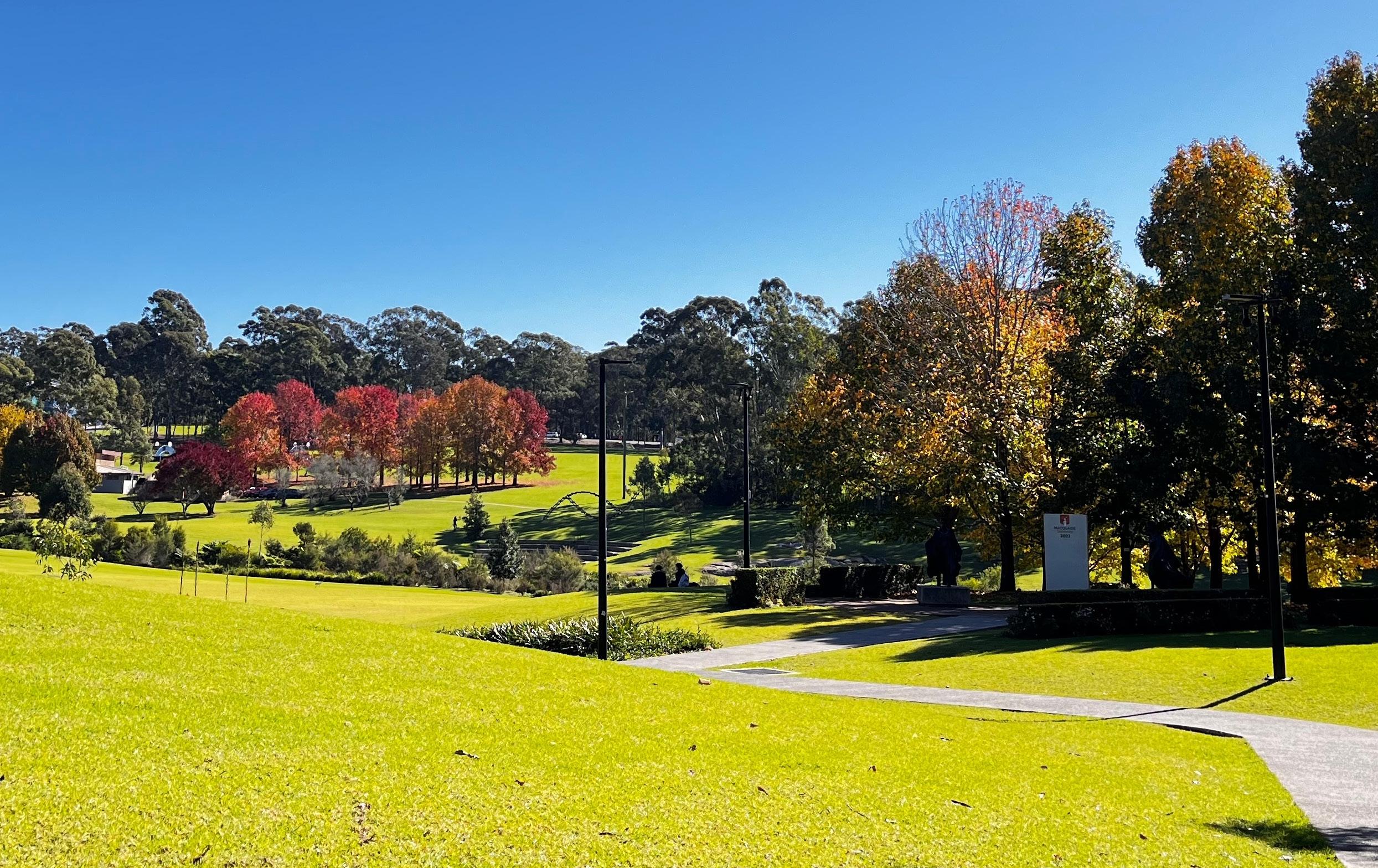
For many in the community, it is difficult to explain what an economy is and what it does. In 1776, Scottish philosopher Adam Smith described the economy as an “invisible hand” that guides societal actions.
“Every individual necessarily labours to render the annual revenue of society as great as he can. He generally neither intends to promote the public interest, nor knows how much he is promoting it. He intended only his own gain, and he is, in this, as in many other cases, led by an invisible hand to promote an end which was no part of his intention.”
(Wealth of Nations, 1776; Bk. 4, Ch. 3)
The Reserve Bank of Australia is more programmatic, providing the following definition:
“An economy is the system for deciding how scarce resources are used so that goods and services can be produced and consumed.
Resources are things like land, people (who can work or innovate through their ideas) and raw materials. They are seen as scarce because we have unlimited wants but there are not enough resources to produce the goods and services to satisfy these wants.” (What is the Economy, 2020; Presentation)
Economic development encompasses a range of activities aimed at improving the economic health and vitality of a region or community. It involves fostering sustainable growth, creating job opportunities, increasing incomes, and enhancing the overall standard of living. This process often includes initiatives such as attracting new businesses, supporting existing
industries, investing in workforce development and education, improving infrastructure, promoting innovation and entrepreneurship, and facilitating trade and investment.
Local governments, such as the City of Ryde Council (Council), play a crucial role in economic development by fostering an environment conducive to business growth, such as investing in key infrastructure projects, simplifying policy and streamlining regulations. They also facilitate partnerships between businesses, educational institutions, and community organisations to stimulate economic growth and ensure long-term prosperity.
Like other Council functions, there is a growing expectation from stakeholders that local governments play a larger role in the shaping of social, environmental, and economic outcomes.
Research by the University of Technology Sydney acknowledges that there are different approaches to economic development in local government.
“Economic development can be understood as an ‘additional function’ for many organisations including the majority of councils – it may be a corporate goal, but not necessarily an overriding service delivery objective.
Councils that tend to view economic development as an attitude, typically seek to perform an integrated economic development role – mainstreaming rather than compartmentalisation.
Regardless of the size, shape or budget of a local government area – all councils can perform a role in local and regional economic
development.” (Pugalis, L., Tan, SF., 2017, The Role of Local Government in Local and Regional Economic Development, University of Technology Sydney).
Local stakeholders and Council agree that a more strategic approach is required from Council’s economic development activities in order to realise the community’s vision of Lifestyle and Opportunities at your doorstep.
Local governments have limitations when it comes to economic development, primarily due to jurisdictional boundaries and resource constraints. While they have significant autonomy and responsibility for local economic matters, there are constraints imposed by State and Federal legislation and policies alongside other practice considerations such as regulatory constraints, fiscal constraints, infrastructure limitations, policy alignment, inter-governmental relations, and the need for equity and balance when using public funds.
To navigate these limitations effectively, the City of Ryde Council focusses on collaboration with stakeholders, leveraging available resources efficiently, prioritising projects that promote equity and sustainability, advocating for policy changes where necessary, and seeking innovation solutions to address economic development challenges. Additionally, we see partnerships with the private sector, community organisations, and educational institutions to help us overcome some of these limitations to foster more comprehensive and inclusive economic development
This Economic Development Strategy (EDS) has been completely developed by Council staff in collaboration with local stakeholders. Removing the reliance on the use of consultants has enabled staff to gain a deeper understanding of the short, medium, and long-term issues facing our local community. This understanding has underpinned the importance of generational thinking in the development of this EDS and other economic development strategies in order to deliver meaningful economic outcomes for the community we serve.
Steps 1-5 of the EDS’s lifecycle represent the design phase. To guide their efforts during the design phase, staff have followed the Double Diamond method1 – a design process model that encourages divergence and convergence in the designing of projects, plans, and strategies.
Through stakeholder engagement and evaluation, the design phase had a strong focus on understanding what has worked and not worked in the past.
Adopted by the City of Ryde Council in 2020, Council’s existing EDS had an operational approach to economic development, focusing on:
1 Place-based marketing
2 Placemaking, and
3 Capacity building.
Six out of previous EDS’s 15 actions (40%) were completed prior to the creation of the City Economy team in 2023. While previous EDS’s focus areas continue to be relevant, for the most part they are now business-as-usual.
Notwithstanding the above, stakeholder expectations have changed dramatically since the adoption of the previous EDS. The COVID-19 pandemic highlighted the need for flexible and agile approaches by government when supporting local businesses. Subsequent years of high inflation and a growing housing crisis further underpin the need for Council to be more strategic, collaborative, and agile in its approach to economic development.
Our stakeholders are seeking a more strategic approach, with feedback in the development of this EDS urging Council to collaborate with other levels of Government, the private sector and not for profits to tackle complex issues such as:
1 Increasing access to more affordable and diverse housing
2 Increasing access to local employment opportunities, and
3 Improving various social and environmental outcomes.
There is a strong desire for Council to look to the State Government models—to think holistically and strategically about how it delivers services, infrastructure, and support to its diverse community (residents, businesses, workers, and visitors).
This EDS seeks to build on past work while also responding to current trends and stakeholder feedback. It reflects consideration of Ryde’s economic factors of production and the City’s strengths, weaknesses, threats, and opportunities. It reflects an appreciation of the role of small and local neighbourhoods alongside the role of economic centres, the Macquarie Park Innovation District, and the broader contribution the City of Ryde makes to the New South Wales and Australian economies.
collaboration between incubators and universities across NSW.
• Leveraging the completion of an expanded Sydney Metro network, including attracting businesses, workers and students to the City of Ryde (e.g., Sydney CBD to Macquarie Park Innovation District in less than 18 minutes).
District as well as local economic centres.
• Changing the way of work –Post-COVID, the new normal is yet to stabilise across different industries.
The City of Ryde’s previous EDS included an analysis of the City’s strengths, weaknesses, threats and opportunities (a SWOT analysis). This work has been refreshed by current staff utilising research and stakeholder insights.
STRENGTHS
• Culturally rich area, with a diversity of cultures and languages (new business opportunities linked to international markets).
• Historically strong local centres and communities are at the cusp of renewal (West Ryde— Meadowbank, Eastwood, Gladesville).
• Home to a globally competitive innovation district, the Macquarie Park Innovation District.
• Over $700 million is invested annually in R&D within the Macquarie Park Innovation District, underpinning the City’s broader strengths as an innovation-based economy.
• Well located LGA—at the north/ south and east-west intersection of the northern Sydney region. It is a gateway between regional NSW and metropolitan Sydney, with access to the M2 and NorthConnex alongside heavy freight and an extensive public transport network that includes rail, metro, ferries, and buses.
• Home to an increasing number of families (residents), a large professional base (workers), and a large base of highly skilled workers (higher levels of educational obtainment).
• Strong employment growth (new businesses and new jobs).
• Access to a steady and diverse pipeline of talent through the presence of Macquarie University, two TAFE NSW campuses, and the Institute of Applied Technology – Digital.
• Home to Macquarie University Hospital, the only hospital wholly owned by a university in Australia.
• Lack of flexible and affordable office, incubator and innovation spaces (particularly for startups and scaleups).
• Lack of venture capital in the Australian innovation ecosystem when compared to international markets.
• An established innovation ecosystem, backed by the highly productive industries with multi-billion-dollar values of output (gross revenue), including manufacturing ($10.25B), information media and telecommunications ($6.6B), wholesale trade ($4.62B), and professional, scientific and technical services ($3.85B).
• Lack of vibrancy and amenities (including public open space) for workers across economic centres and the Macquarie Park
Innovation District.
• Lack of enabling and climate resilient infrastructure.
• Oversupply of A-grade and B-grade office space within the Macquarie Park Innovation District.
• Additional permissible uses could be introduced in the planning system, including an Innovation State Environmental Planning Policy to protect innovation spaces while also encouraging innovative mixed industrial and residential development.
• Enhancement of the innovation ecosystem through opportunities created by the Australian Government’s focus on industry 4.0 and sovereign manufacturing.
• Enhancement of economic centres, including the nighttime economy, through urban renewal, increased densification, and a commitment to provide local employment opportunities alongside residential development.
• Greater collaboration on achieving Net Zero targets, including opening dialogue between the Macquarie Park Innovation District and the Renewal Energy Zones of the Hunter, Central Coast, Central West and Orana regions.
• Greater support for local startups through improved access to and
• Enhanced cooperation with international partners who seek to leverage the City’s strengths and share knowledge, technologies, and human capital to grow the City’s economy.
• Unfinished master plans negatively impact investment in the Macquarie Park Innovation
• Inflation and cost of living pressures impact consumer spending as well as business investment into new capital.
• Increased pressure to replace industrial and commercial lands with residential development.
• Sustained pressures on global supply chains linked to geopolitics and conflict.
• Lack of incentives and support for the upscaling of startups and small businesses.
Staff research identified that effective strategies were often built on the use of an outcomes-based approach to strategic planning. This is a new concept being embraced by the City of Ryde, with this EDS the first strategy to be fully designed around an outcomes-based approach, which involves the establishment of long-term outcomes with four-year objectives (matching a Council term). Action plans will be an annualised activity linked to Council’s existing budget process.
Figure 4 presents how outcomes and objectives at the strategic level translate down to operational activities.
The outcomes in this EDS articulate the primary purpose for which Council’s resources will be invested. They represent Council’s goals and priorities across all its economic development activities for the City of Ryde.
Outcomes enable agile and innovative approaches to designing and delivering economic development activities. They also act as a barometer for economic development, relying on evaluation and performance reporting to inform whether Council’s efforts are making a genuine difference and whether the allocation of Council resources to economic development activities is done efficiently and effectively.
An objective is something the Council plans to achieve within a set timeframe. Objectives within the EDS have been designed to be SMART objectives, being: Specific, Measurable, Achievable, Relevant, and Timely.
The objectives have been designed to reflect our fouryear terms for Council. For this EDS, the objectives work to the financial years 2024/25 through to, and including, 2027/28. The objectives will be revised as part of the 2028 revision of this EDS.
Documented in an annual (financial year) Economic Action Plan, an action is the work to be done to achieve the objective. Actions are not dayto-day tasks. They are specific activities, projects, or programs that require an allocation of resources to complete the action within the financial year. Cumulatively, the completion of actions will reflect the fulfilment of the objectives outlined in this EDS.
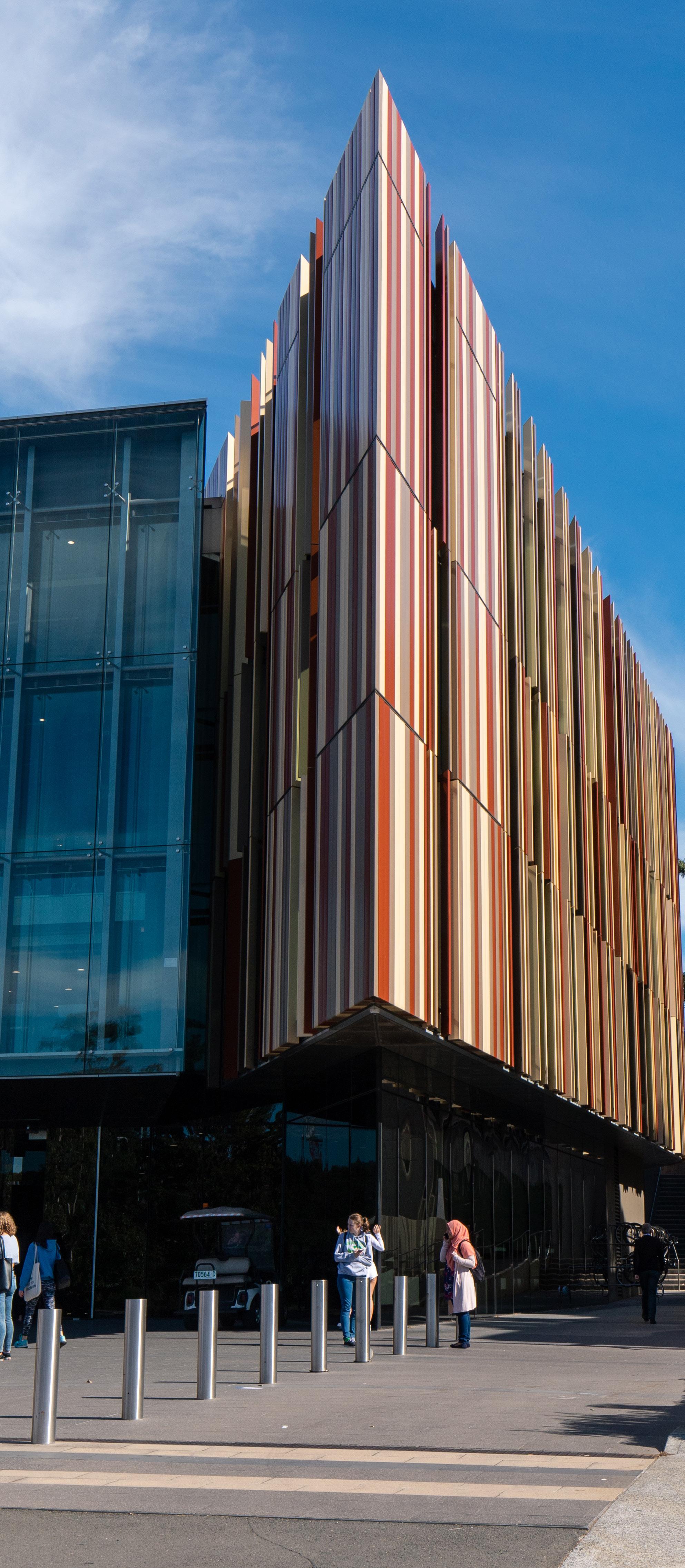
TEST 4
(To be updated post public exhibition). A draft of the EDS will be exhibited for public consultation during June 2024. Importantly, the exhibition process provides stakeholders with an opportunity to provide feedback on what they do and don’t like about the EDS. This feedback will likely lead to a combination of validation and refinement to ensure a final EDS is fit for purpose.
(To be updated post public exhibition). A final EDS will be prepared using feedback received during the public exhibition period. For transparency and accountability, a final EDS will be subject to a resolution of the Council (scheduled for July 2024).
Once approved, the EDS will be published on Council’s website and disseminated to key stakeholders, such as educational institutions and Chambers of Commerce.
Guiding the implementation will be an annual Economic Development Action Plan, which will be developed alongside annual budgets and business plans (between November and February each year). With the exception of the first Action Plan (2024), Councillors will be consulted via a Councillor workshop/planning day in February each year.
Funding for the action plan will be approved by the Council via the adoption of the annual Operational Plan, with the Economic Development Action Plan published on Council’s website.
Council’s City Economy team is responsible for the stewardship of the EDS, which includes implementation, monitoring and reporting, and evaluation.
The development of annual Economic Development Action Plans will include reporting against the completion of actions as well as progress towards the fulfillment of objectives outlined within this EDS.
The publishing of annual Economic Development Action Plans will be supported by the publishing of report cards documenting our progress and any refinements that may have resulted from evaluation activities.
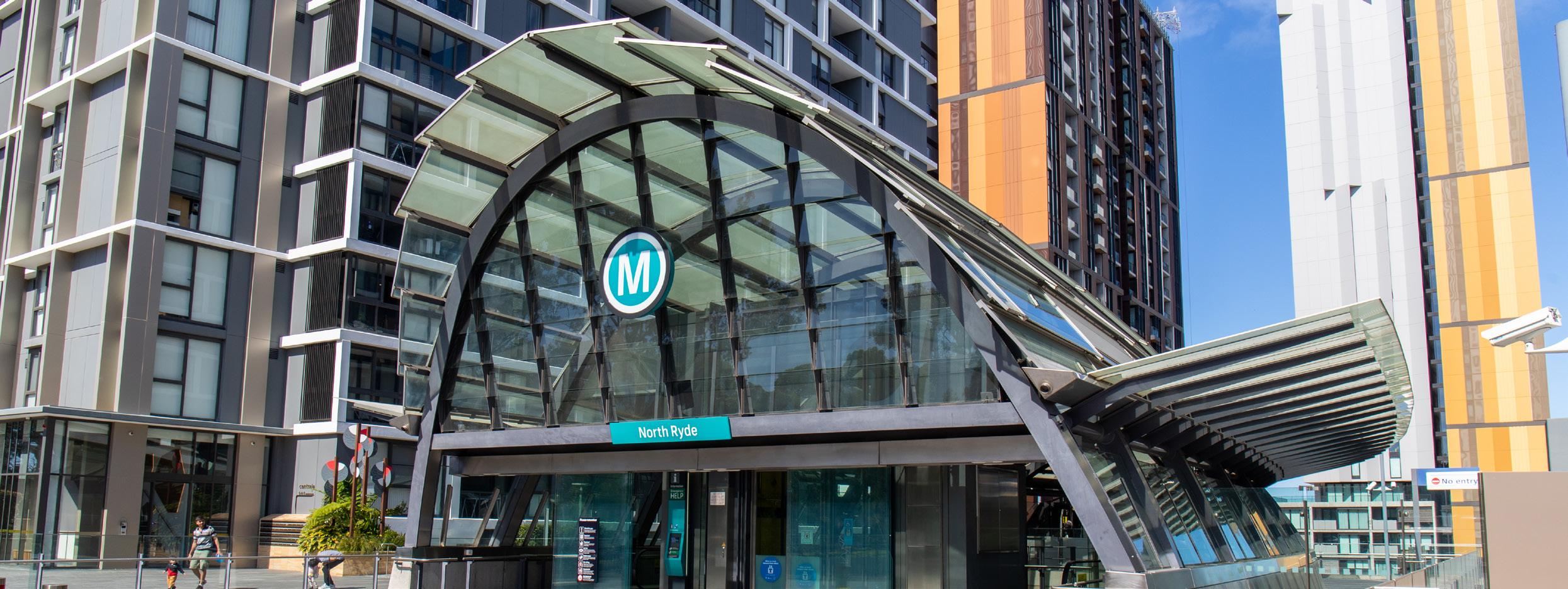
Outcome evaluation seeks to verify a causal link between the completion of actions and the outcomes outlined in this EDS.
The City of Ryde is committed to increasing the transparency of expenditure on programs and projects to provide a better understanding of their outcomes. NSW Treasury defines an evaluation as a rigorous, systematic and objective process to access a program’s effectiveness, efficiency, appropriateness and sustainability.
A high-quality evaluation will:
• Inform decision-making
• Improve programs and projects, and
• Share learnings.
In the context of the EDS, evaluation findings can be used to:
• Improve the design of economic development activities
• Justify the continuation of key projects and activities
• Make a case for the expansion of certain economic development activities, or
• Make a case for discontinuing certain economic development activities if deemed ineffective).
There are three main types of evaluation that will be utiliised for the EDS:
Outcomes evaluation identifies who the actions work best for, and under what circumstances. It also considers any unintended consequences of our actions for participants and stakeholders. with a disability.
Outcome evaluation relies on data and the production of reliable results, meaning that is shouldn’t be undertaken until actions have been completed for some time.
In the context of this EDS, outcome evaluations will occur every four years to support the revision of the EDS. active in the City of Ryde. Through education, Council will support local businesses to create working environments that:
(a) create new employment opportunities for people living with a disability, and (b) encourage employees to disclose their disability to ensure they have the tools they need to perform well.
Process evaluation looks at how actions are delivered, describing the action’s current operating conditions and identifying processes hindering success completion.
Process evaluation should be ongoing and should start early in the delivery of an action. When performed early, process evaluation will improve the action’s implementation. Periodic process evaluation can produce evidence and meaningful insights for outcomes evaluation (i.e., it helps ensure the data is collected to support outcomes evaluation).
Economic evaluation
identifies, measures, and values an action’s economic costs and benefits postproject completion.
A practical approach to exante economic evaluation follows the same approach used to produce a CostBenefit Analysis. Completing it post an action’s completion (ex-ante).
Economic evaluation assigns a value to a action’s inputs and outcomes. Therefore, a quality economic evaluation can only be undertaken when an action has produced all the reliable results and data needed to perform the analysis (which may not be until all benefits have been fully realised).
Ex-ante evaluation can be a costly exercise and will be reserved for activities where the evaluation’s value is commensurate to the cost of conducting the evaluation.


Wullumatta was the original name given to the area and likely derived from the Wallumedegal term for snapper fish, wullumai, and matta, a place usually associated with water. The Aboriginal name survives in the Wullumatta Nature Reserve in North Ryde.
European occupation dates from 1972, when the first land grants were made along the northern bank of the Parramatta River. By 1841, the name Ryde began to emerge for the district. It was derived from its English namesake on the Isle of Wight. The area first came into legislative existence in 1870 as the Municipal District of Ryde. During its early years, the district was largely agricultural.
By the late 1900s, villages and town centres began to spring up along main roads and around train stations, bringing with them a large increase in population. Throughout the 1950s, Ryde continued to grow and urbanise. In 1957, Top Ryde, Australia’s first drive-in shopping mall, opened its doors.
Macquarie University was established in 1964 alongside Australia’s original innovation district—the Macquarie Park Innovation District—a Federal Government initiative. Ryde was home to booming industrial and scientific sectors, including the establishment of several CSIRO facilities and the Gladesville industrial estate.
Macquarie Shopping Centre opened in 1981 and remains one of the largest shopping centres in New South Wales to this day.
Today, the City of Ryde Local Government Area (LGA) covers an area of approximately 40 square kilometres, including waterways and parklands. It is located 12 kilometres from the Sydney CBD. It includes 16 suburbs, two major rivers, 200 hectares of natural areas, 207 parks and open spaces, a globally competitive university, two TAFE colleges, and the Institute of Applied Technology – Digital.
CITY OF RYDE PROFILE CONTINUED
In 2023, the City of Ryde was home to approximately 135,000 residents and approximately 92,000 jobs. The City of Ryde LGA is a major employer for residents outside our LGA, with over 71,000 people working in the area who live outside of the City. Only a third of our working population work within the LGA, demonstrating an opportunity to create more local employment opportunities. Our City’s resident workforce is highly educated, with an above-average proportion of female workers.
The City of Ryde is home to 14,361 businesses at the end of June 2023, growing by 431 businesses compared to June 2022. The City of Ryde’s growth rate for businesses between 2022 and 2023 financial years was 3.1% - higher than the Parramatta LGA (1.5% growth), City of Sydney LGA
(2% growth), and North Sydney LGA (-0.3% decline).
The Macquarie Park Innovation District is a nationally significant economic hub, contributing $13.6 billion to the NSW economy – representing more than half of the City of Ryde LGA’s Gross Regional Product, seeing the LGA, along with North Sydney, place behind only the City of Sydney in contributing to NSW’s Gross State Product. Industrial areas throughout the south of the LGA, in Gladesville and West Ryde, provide critical anchor points for productivity, employment, and a diverse economy and contribute towards the NSW Government’s broader vision of 30-minute cities – where people can get from their homes to their workplaces within 30 minutes on public transport, seven days a week.
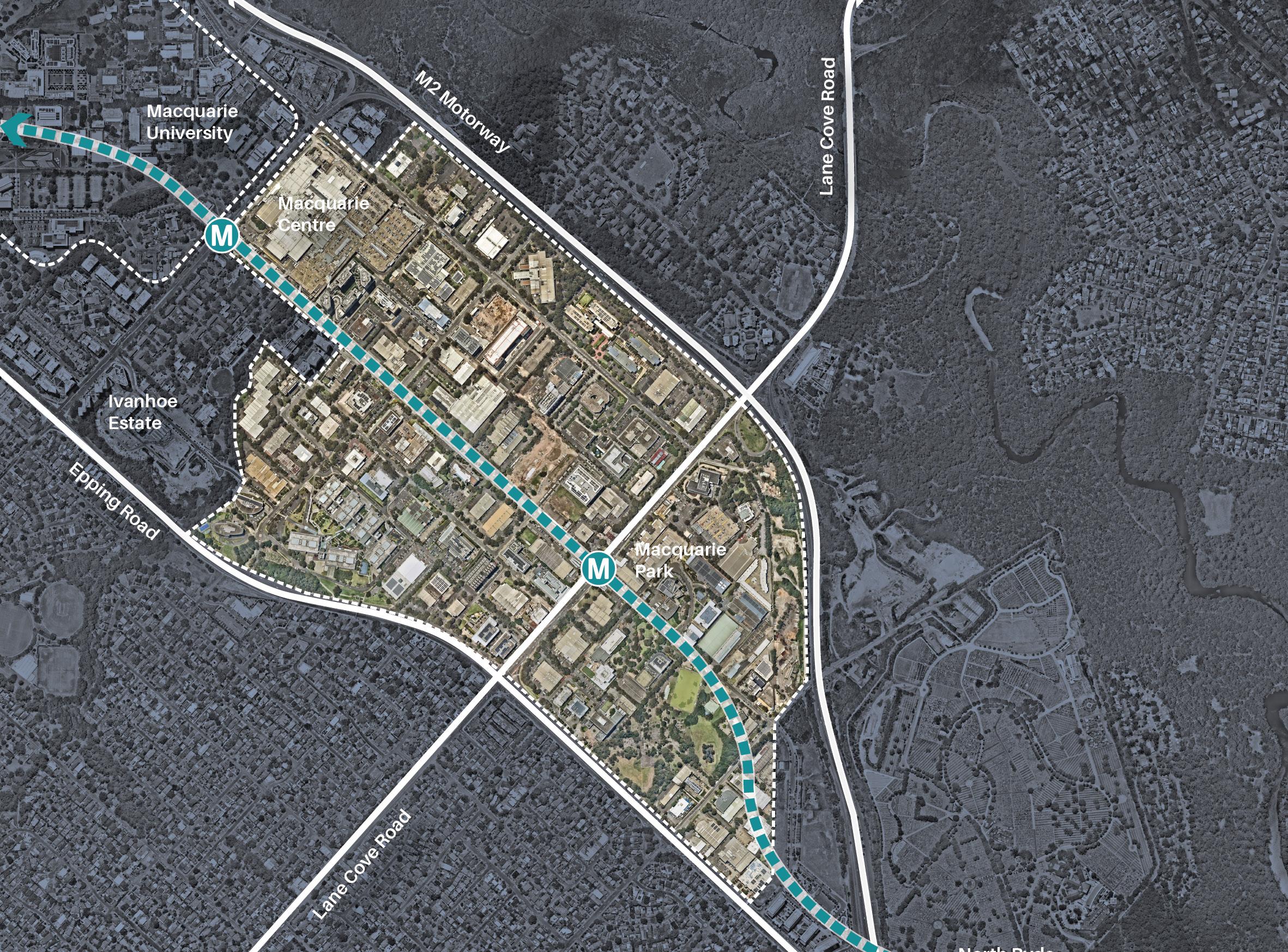

Australia’s original innovation district, the Macquarie Park Innovation District, is home to the world-class Macquarie University, headquarters of multinational organisations, startups, scale-ups, and established Australian businesses across a variety of highgrowth, deep technology sectors.
The strengths of the Macquarie Park Innovation District’s include its diverse innovation ecosystem, proximity to key population areas (including Sydney’s CBD), access to a pipeline of talent via Macquarie University, and the presence of two TAFE campuses and the Institute of Applied Technology— Digital in the broader LGA.
As an economic powerhouse within Australia’s knowledge economy, the Macquarie Park Innovation District hosts leading organisations in highvalue-adding sectors, including financial services, professional, scientific, and technical services, property services, information media, telecommunications, and health. Its industrial profile encompasses higher education, research,
innovation, and emerging industries, which are expected to generate continuous, high levels of R&D activity and make an important contribution to the continued growth of NSW and Australian productivity and economic output.
The presence of a diverse, deep technology sector and innovation activity is a key driver of success in the Macquarie Park Innovation District. Levels of investment and economic contribution are similar to or exceed those seen in other leading Australian innovation districts. Macquarie Park Innovation District’s strengths are centred on an enterprise culture featuring partnerships between diverse organisations. Multinational and emerging organisations across high-growth sectors are located alongside world-class research and knowledge institutions.
While the Macquarie Park Innovation District is an established innovation district, continued support is required to ensure that it remains a globally competitive innovation
district propelling economic growth. Unlocking the full potential of the Macquarie Park Innovation District will require:
• Enhancements to public infrastructure (such as open spaces, footpaths and cycle paths), commercial infrastructure (such as innovation spaces), and enabling infrastructure (such as utilities).
• A balanced approach to development – delivering an increase in housing alongside access to employment opportunities, essential services, and essential infrastructure.
• Increased incentives aimed at de-risking R&D – including incentives targeting businesses and landowners.
• Improved operational performance, including greater cooperation and collaboration between all tiers of government and the private sector regarding the advancement of the Macquarie Park Innovation District.
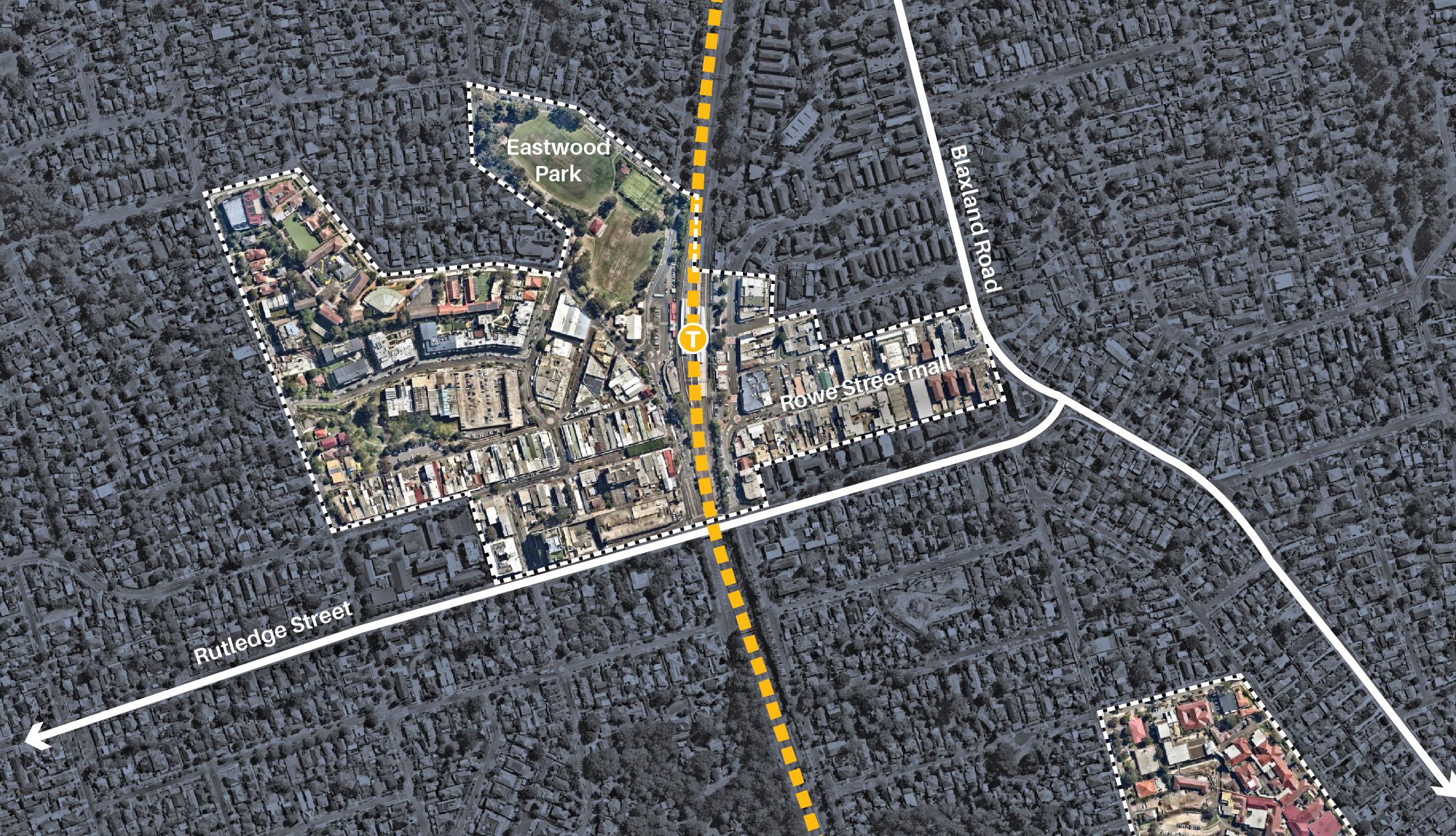
Eastwood is a vibrant economic centre within the City of Ryde. It is celebrated for its multiculturalism and is a destination for foodies. Eastwood boasts a diverse array of shops, eateries, and cultural attractions and is home to two of the City’s largest events: the Granny Smith Festival and the Lunar New Year Festival
Eastwood attracts visitors from across Sydney and beyond. Its retail and hospitality scene, particularly along Rowe Street and surrounding areas, contributes significantly to the local economy, generating employment opportunities alongside places for social gatherings.
Eastwood’s economy has developed organically, with the local community actively involved in shaping Eastwood as a cultural destination. This is complemented by the presence of high-quality open space and playing fields adjacent to the Eastwood
shopping centre and the Eastwood Railway Station. PE
Key economic challenges to overcome in the Eastwood economic centre include the need to improve flood resilience and the need to improve connections between the eastern and western sides of the Eastwood Railway Station.
Beyond broader urban renewal, key economic opportunities for Eastwood include enhancing its role as a multifaceted tourism destination. This includes leveraging the centre’s existing strengths in multiculturalism, hospitality, and retail to support an enhanced nighttime economy. It also includes exploring opportunities for healthcare services and leveraging the redevelopment of the nearby Ryde Hospital. This could include, for example, encouraging health service providers to operate later into the evening.
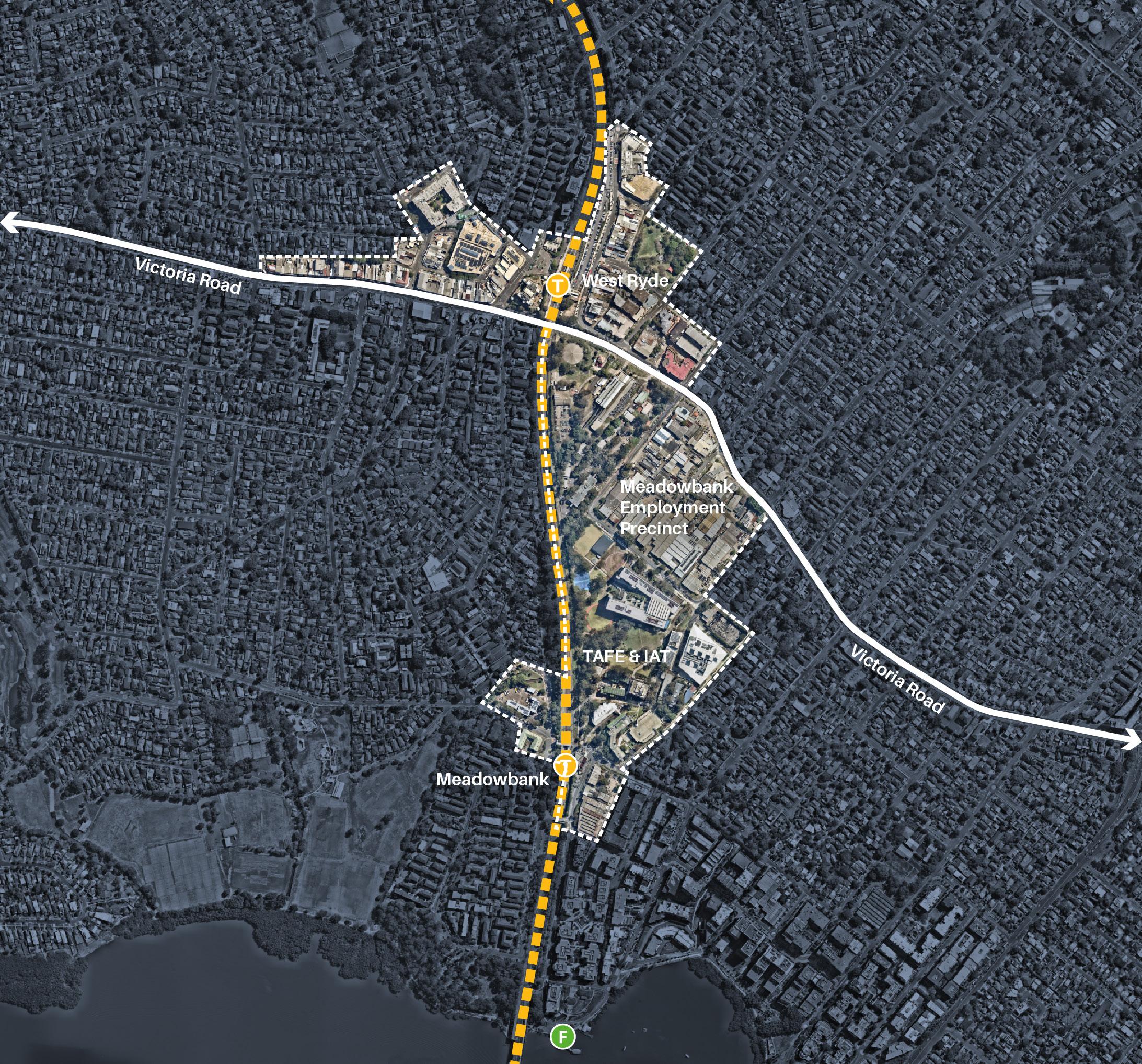
West Ryde-Meadowbank serves as a pivotal economic centre within the City of Ryde, characterised by its strategic location, transport infrastructure, and education institutions (TAFE and the Institute of Applied Technology – Digital).
Home to two railway stations, key bus routes and the Meadowbank Ferry Wharf, the area facilitates commuter traffic and supports local businesses that can leverage public transport connections for their customers or local roads for the movement of goods. Moreover, the presence of the TAFE, schools, and the Institute of Applied Technology—Digital contributes to the local economy through education-related spending and ancillary services.
The Greater Sydney Commission’s 2020 Meadowbank Education and Employment Precinct Master Plan (MEEP) gave residents, businesses, and workers hope that the precinct surrounding the new school and TAFE site would include improvements to the area, such as enhanced open space through the use of the Sydney Water site, improved walkability through the West Ryde industrial lands, and intensification of employment opportunities. Although Council is supportive of the MEEP, it is yet to be realised and there is no certainty that the Master Plan will be implemented.
Local stakeholders are beginning to take the renewal of West RydeMeadowbank into their own hands.

Positively, stakeholders are seeking opportunities to deliver lifestyle and employment opportunities to residents through increased housing and diversified employment opportunities. While positive, an unplanned approach could be detrimental to the area.
The loss of employment lands for residential development could turn the area into a commuting suburb—a location where you live but don’t have opportunities for work.
The key economic opportunities for West Ryde-Meadowbank come from leveraging employment opportunities linked to educational facilities. An innovative approach is needed to renew the West Ryde industrial lands – finding a planning outcome that could potentially support residential development while unlocking employment opportunities that enable
existing businesses to remain while also encouraging new businesses into the area –particularly businesses that could leverage Australia’s growing industry 4.0 sectors (e.g., a universitybacked Testlab alongside spaces for robotic design, manufacturing, assembly, and testing).
Other economic opportunities for West Ryde-Meadowbank include experienced-based night time economy opportunities. Development activities that unlock cultural experiences, live entertainment, outdoor dining and markets could improve the vibrancy of the area. This could attract accommodation service providers, whose customers could benefit from a vibrant local scene alongside its strategic location and connections to other entertainment and employment centres across Sydney, such as Sydney Olympic Park.
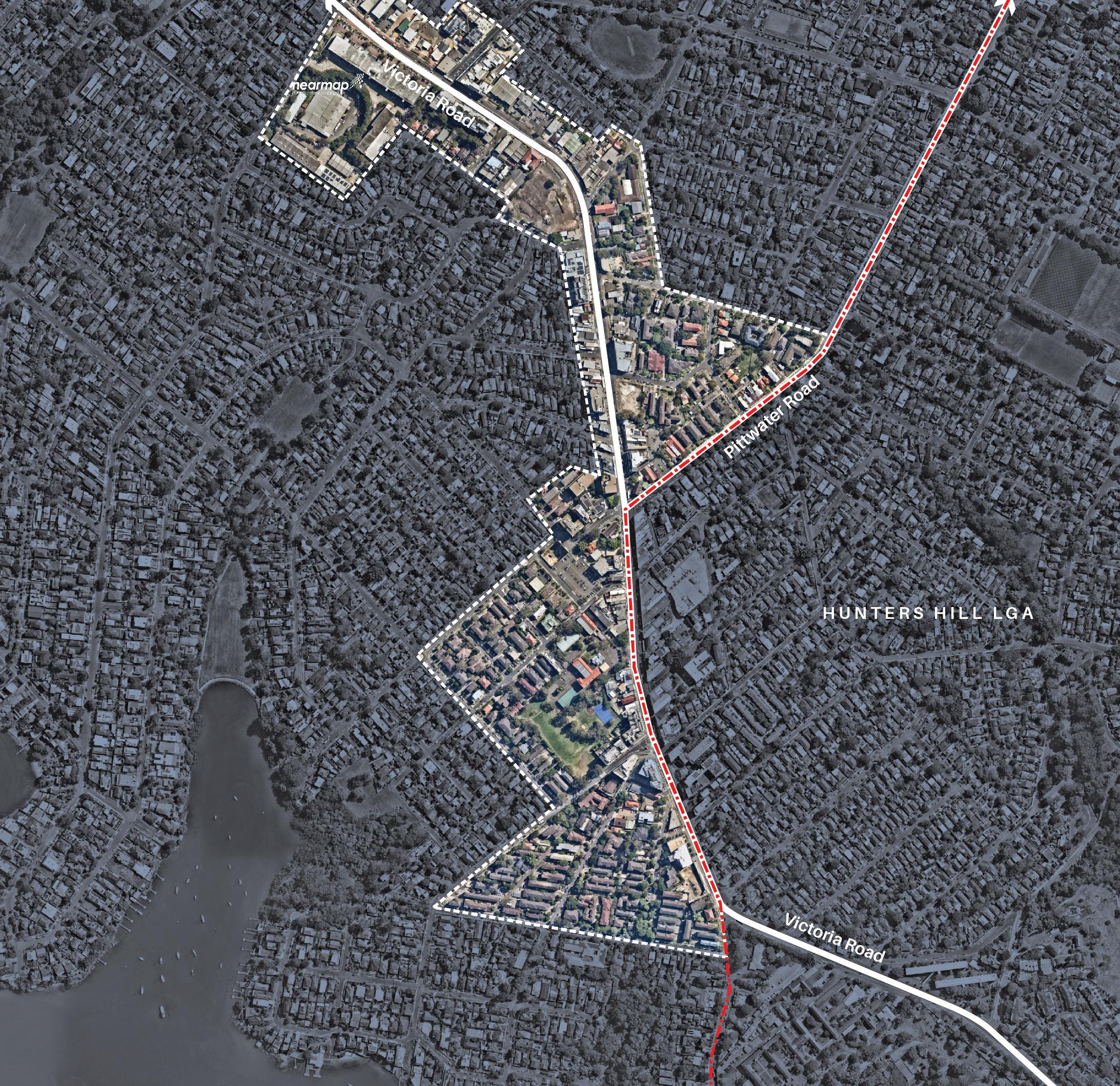
Gladesville is a unique economic centre for the City of Ryde. It is a small and boutique economic centre that supports an array of hospitality and retail businesses. The broader suburb of Gladesville, however, is a destination for recreation. This is due to the area’s location on the picturesque banks of the Parramatta River.
Although public transport connectivity throughout Gladesville can be challenging, the economic centre is frequently serviced by buses
connecting locals to destinations like Chatswood, Top Ryde and West Ryde.
Improved public transport connections along Victoria Road could encourage increased identification around the economic centre, unlocking more opportunities for the hospitality and retail sectors. Improved connections between the economic centre and the foreshore could also unlock tourism opportunities linked to recreational boating, fishing, events, and shortterm rental accommodation.
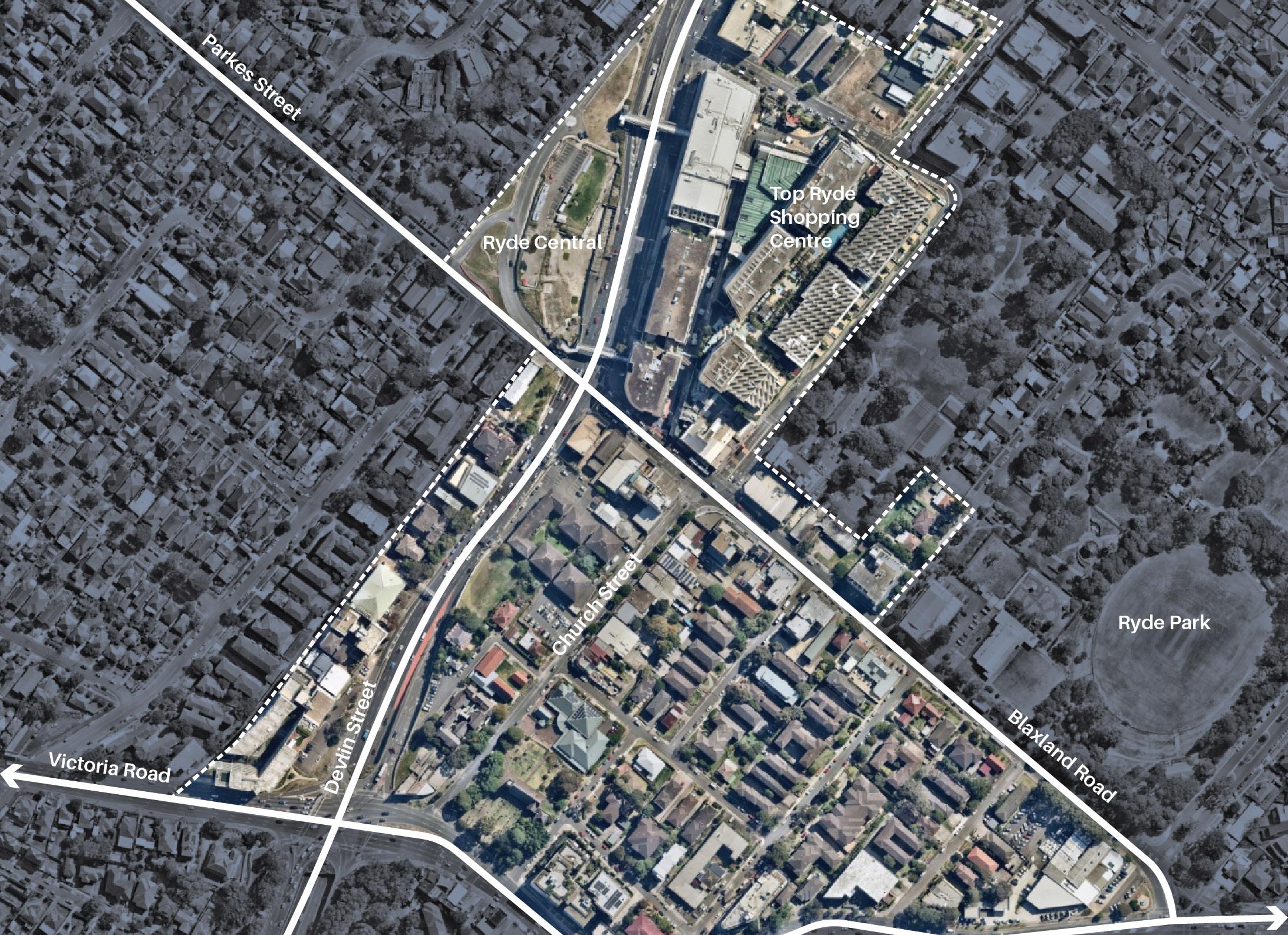
Distinguished by the mixed-use redevelopment of the Top Ryde Shopping Centre, Top Ryde provides residents and workers with modern amenities, retail outlets and dining options, alongside entertainment facilities and spaces for social interaction.
Top Ryde is in a strategic location, connecting commuters to Victoria Road (East/West) and Lane Cove Road (North/South). Its public transport network also connects commuters to the West Ryde railway station and metro stations in Macquarie Park and Chatswood.
Top Ryde is well located in terms of its connections to other economic centres across the City of Ryde as well as the Macquarie Park Innovation District. It is challenged, however, by a
The City of Ryde is blessed with a large amount of small and neighbourhood centres, which:
• Offer an alternative destination to larger economic centres,
• Are places with a distinctive character, which encourage strong and diverse communities to grow,
• Provide convenient access to local retail and populationserving services,
• Provide an opportunity for a mix of housing types nearby,
• Enhance the health and wellbeing of the local community through active living, and
• Support a strong local economy and provide local employment opportunities.
lack of densification and an inefficient public transport network (for example, in the Monday morning peak, it would take you three times longer (30 minutes) to use public transport to get to Macquarie University compared to using a private motor vehicle (10 minutes)).
The demolition of Council’s existing administration building represents both an economic challenge and an economic opportunity. The loss of the Civic Hall as a venue has created market opportunities for other service providers; however, it has also led to increased costs for community groups and not-for-profits looking for low-cost venues. The site is a catalyst site for broader economic activities within Top Ryde. Continued stalling on a resolution for the site will continue to impact the local economy.
The City of Ryde recognises the following small and neighbourhood centres.
Small and neighbourhood centres
Fiveways, Eastwood
David Avenue, North Ryde
Bowden Street, Ryde
Tennyson Road, Putney
Monash Road, Ryde
Shepherds Street, Victoria Road, Ryde
Allars Street, Denistone West
Watts Road, Ryde
Trafalgar Place, Marsfield
Sager Place, East Ryde
Quarry Road, Ryde
Lachlan’s Line, North Ryde
Putney Village, Putney
Flinders Road, North Ryde
Cobham Avenue, Melrose Park
Agincourt Road, Marsfield
Cox’s Road, North Ryde
Blaxland Road, North Ryde
Callaghan Street, North Ryde
Balaclava Road, North Ryde
Doig Avenue, Denistone East
Midway, Ryde
Pittwater Road, Boronia Park
Avon Road, North Ryde
Blenheim Road, North Ryde

The following has been extracted from the Australian Government’s 2023/24 Mid-Year Economic and Fiscal Outlook :
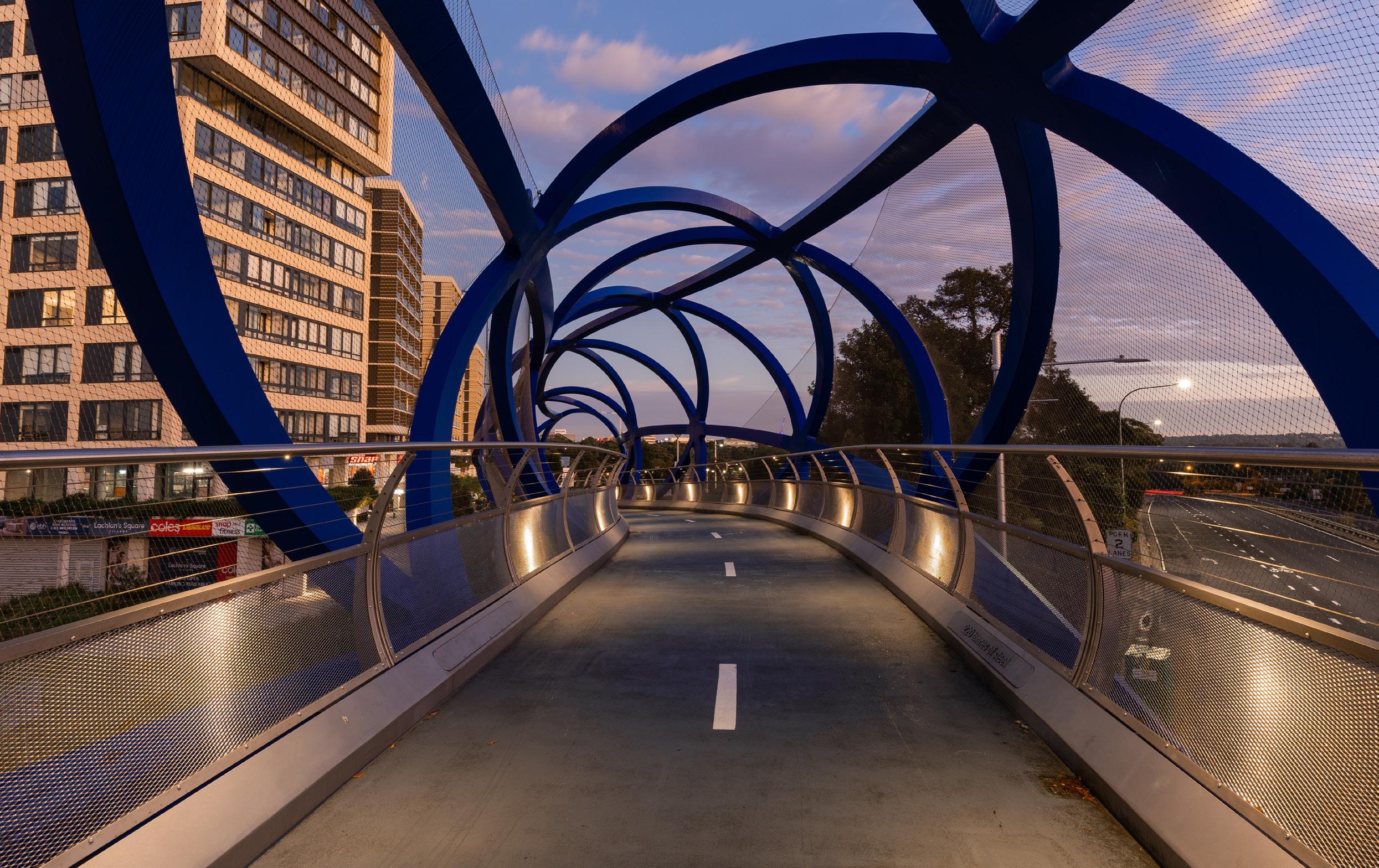
• Facing high but moderating inflation, high-interest rates and global economic uncertainty, the Australian economy has slowed in expected ways.
• While inflation is still too high, it continues to moderate, and real wages are beginning to grow.
• The unemployment rate is low, and the participation rate is near record highs.
• The global economic outlook remains highly uncertain. Global growth is expected to slow over the next two years as persistent inflation and higher interest rates weigh on economic activity.
• The Australian economy is expected to expand by 1.75% in 2023/24 before regaining momentum in 2024/25 as improving real incomes support a recovery in household consumption.
• A deficit of $1.1 billion is forecasted in 2023/24, an improvement of $12.8 billion since the 2023/24 May Budget.


The following has been extracted from NSW Treasury’s 2023/24 HalfYearly Review:
• The NSW economy has remained resilient – supported by rapid population growth and a strong labour market.
• Inflation is easing but remains at an elevated level.
• Economic growth is forecast to continue below trend in the near term despite a modest upward revision for 2023/24. The upward revision reflects stronger population growth and the economy’s resilience to date.
• Spending has been tightly controlled. However, high inflation,
high bond yields, a reduction in the national GST pool, and the Australian Government’s withdrawal of major infrastructure funding have maintained pressures on the State Budget result.
• High inflation and rising interest rates are also impacting household consumption, with the State’s GST receipts forecast to be $1.9 billion lower over the four years to 2026/27.
• State revenues have also been impacted by an estimated $3.2 billion reduction in infrastructure funding following the Infrastructure Investment Program Strategic review by the Australian Government in May 2023.
• The budget result has worsened by $1.7 billion relative to the 2023/24 Budget, largely due to a $0.8 billion deterioration in the State’s projected investment returns, a $0.4 billion reduction in Australian Government funding for infrastructure, and a $0.5 billion increase in interest expenses.
• Despite the pressure on the State’s operating position, the Government remains on track to return to a modest budget surplus of $475.1 million in 2024/25. Surpluses are expected to continue in 2025/26 and 2026/27 at $1.2 billion and $288.0 million respectively.
• Calculated using the expenditure method, the City of Ryde LGA’s Gross Regulation Product (GRP) was estimated to be $18.06 billion at the end of 2023. Comparatively, the City of Ryde’s GRP is higher than Canberra ($16B) and Hobart ($8B), but less than Adelaide ($22B) and the neighbouring Parramatta LGA ($28B).
• The City of Ryde LGA is home to an estimated 91,764 jobs , with the top industry sectors for employment being:
o Health Care & Social Assistance (13,783 jobs)
o Wholesale Trade (12,021 jobs), and
o Professional, Scientific & Technical Services (11,500 jobs).
• Jobs across the City of Ryde LGA are concentrated in the economic
centres of Eastwood, Top Ryde, and West Ryde and highly concentrated in the Macquarie Park Innovation District (covering Macquarie Park and North Ryde).
• At the end of 2022, the total wages and salaries paid to workers in the City of Ryde LGA was $9.544 billion , with the top industry sectors for total wages and salaries being:
o Wholesale Trade ($1.473B)
o Professional, Scientific & Technical Services ($1.434B), and
o Health Care & Social Assistance ($1.188B).
• According to the Australian Bureau of Statistics, the average weekly earnings for all employees was $1,300 per week .
Over 50% of workers in the City of Ryde LGA receive a weekly income higher than the national average.
A 2024 report prepared for Macquarie University by Biointelect found that the Macquarie Park Innovation District was home to:
• An ecosystem that contributes approximately $13.6 billion to the NSW economy – representing more than half of the City of Ryde LGA’s GRP, seeing the LGA, along with North Sydney, place behind only the City of Sydney in contributing to NSW’s Gross State Product.
• 63,000 highly educated, highly productive, high-income workforce, with provisions for tens of thousands of additional jobs under the Macquarie Park Place Strategy.
• 44,000 higher education students.
• Macquarie University and Macquarie University Hospital – contributing $400 million to R&D annually.
• #1 for IP registrations by Australian postcode.
• Over $700 million of investment annually into R&D – translating to approximately $2.6 billion for the national economy.
Macquarie Park Innovation District is home to the headquarters of many large companies. According to the Forbes 2023 “Global 2000” list (as of 8 June 2023), Macquarie Park was home to 13 of the world’s top 200 companies.
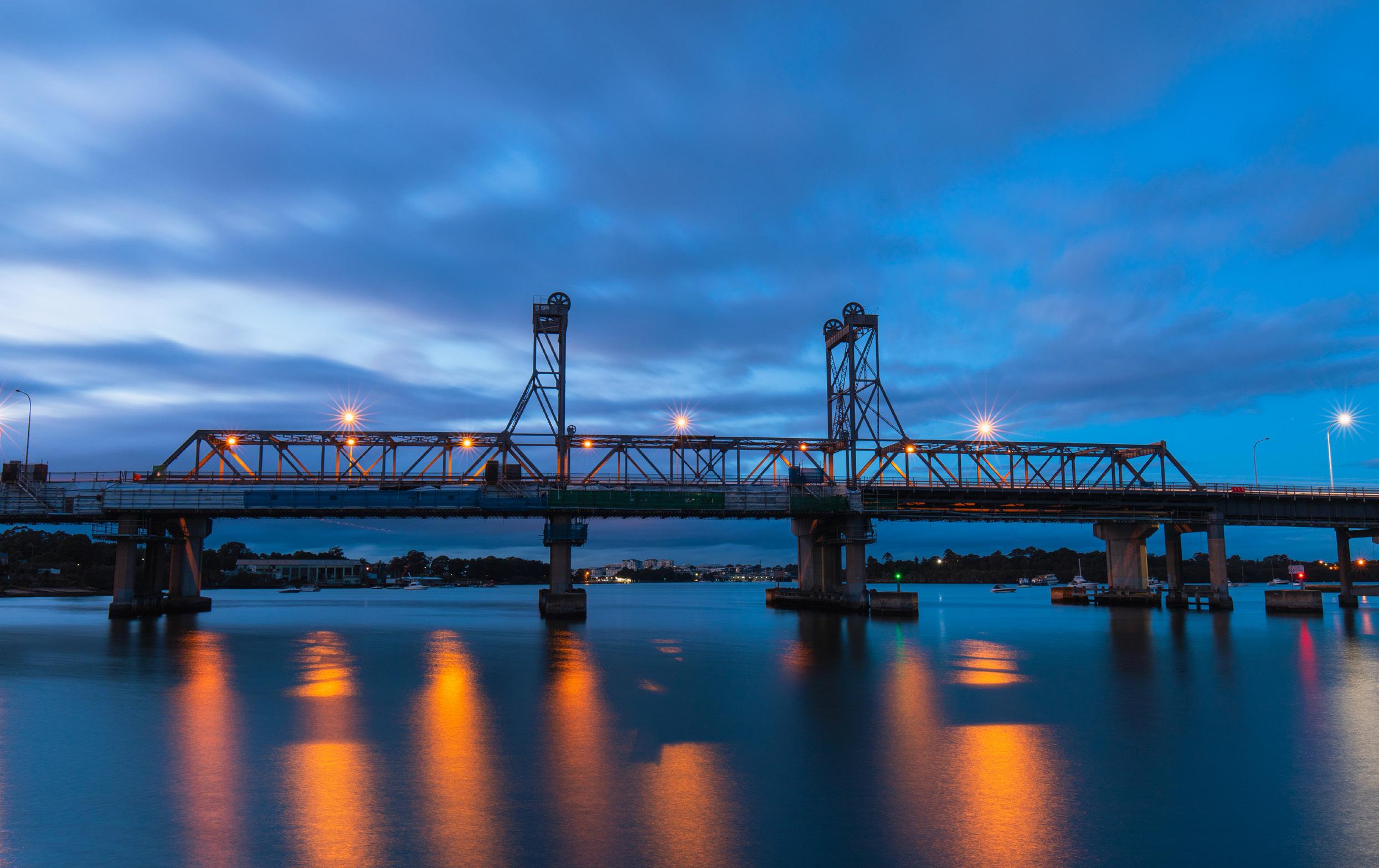
This EDS maintains Council’s existing vision for the City of Ryde’s economy: “A resilient economy that fosters innovation, attracts investment and celebrates diversity.”
This EDS establishes the following eight economic outcomes for the City of Ryde LGA:
Increase the number of jobs available across the City of Ryde
Encourage existing businesses to expand their operations locally
Attract new investment from outside of the City of Ryde
Foster a supportive environment for start ups, scale ups and small business
Protect and enhance the City’s innovation ecosystem
Improve transportation, utilities, and other essential infrastructure for business
Enhance the skills and education levels of the local workforce
Enhance amenities, recreational facilities, climate resilience, and overall liveability of the City of Ryde
– 2027/28)
4-YEAR OBJECTIVES (2024/25 – 2027/28) DETAIL
Increase the number of jobs within the City of Ryde by 10% within four years.
Increase awareness of the tourism offerings in the City of Ryde.
At the end of 2023, the City of Ryde had 91,764 jobs.
Achieving 10% growth in the number of jobs within the City of Ryde would see the City have at least 100,931 jobs by 2027/28.
Whilst tourism directly supports approximately 1,200 jobs, there is very little information available to visitors about the tourism experiences available in the City.
Increasing the awareness of tourism and visitor activities will support new visitors to the City, increasing opportunities for businesses to expand their offerings.
Increase the number of businesses registered in the City of Ryde by 10% within four years.
Support local businesses to employ more people living with a disability.
There are a range of disability employment service providers active in the City of Ryde. Through education, Council will support local businesses to create working environments that:
(a) create new employment opportunities for people living with a disability, and
(b) encourage employees to disclose their disability to ensure they have the tools they need to perform well.
Increase the number of new startups within the City of Ryde by 25% within four years.
Macquarie University’s Incubator supported 43 startups in 2023, 24 of which were new startups. Although more work is needed to understand the broader startup ecosystem across the City of Ryde, increasing the number of new startups through Macquarie University’s Incubator would be 30.
Double the number of Indigenous businesses certified and registered with Supply Nation within the City of Ryde within four years.
At the end of 2023, the City of Ryde was home to 14,361 businesses. Achieving 10% growth in the number of businesses registered within the City of Ryde would see the City home to at least 15,797 businesses by 2027/28.
According to the Supply Nation’s Indigenous Business Register, there are 729 verified Indigenous businesses registered within a 100km radius of the City of Ryde LGA. However, only five Indigenous business are registered within the City of Ryde LGA.
Similarly, there are 347 verified Indigenous businesses certified within a 100km radius of the City of Ryde LGA. However, only three Indigenous businesses are certified within the City of Ryde LGA.
Doubling the number of Indigenous businesses would increase the number of Indigenous businesses certified and or registered within the City of Ryde LGA to at least 16.
Note: Certified suppliers are Indigenous businesses that are 51% or more owned, managed and controlled by Aboriginal or Torres Strait Islander people.
Registered suppliers are Indigenous businesses that are 50% or more owned by Aboriginal or Torres Strait Islander people.
Increase the number of businesses owned by women by 10% within four years.
As of May 2021, less than a third of businesses in the City of Ryde were owned by women (67.8% male business owners, 32.2% female owners).
Increasing the number of businesses owned by women by 10% would see over 400 new businesses owned by women.
Increase support for businesses owned and operated by people living with a disability.
Research by the University of Technology Sydney in 2020 found that people with a disability are more likely to be self-employed than people without a disability. Increasing awareness and opportunities for businesses owned by a person with a disability creates meaningful employment for people with a disability and supports innovation and entrepreneurship.
18 https://www.uts.edu.au/sites/default/files/article/downloads/Australias%20Disability%20Entrepreneurial%20Ecosystem%20Report%201%20240620%20%28Accessible%29.pdf
4-YEAR OBJECTIVES (2024/25 – 2027/28) DETAIL
Increase the registration of Intellectual Property (IP) (patents, trademarks, and designs) within the City of Ryde by 10% within four years.
Based on a search of IP registrations, the City of Ryde was home to 4,920 IP registrations, with the Macquarie Park Innovation District being Australia’s number 1 postcode for new IP registrations.
At the time of creating this EDS, IP Australia was reviewing their approach to publishing IP data. Synthesis of current datasets requires systems not available to the Council at the time of creating the EDS.
Utilising the publicly available figure for 2019, a 10% increase would equate to an increase of at least 490 new IP registrations over the next four years.
Enhance workers’ access to public open space across the Macquarie Park Innovation District and City of Ryde’s economic centres in line with the Council’s Public Open Space Strategy.
Attract $50 million in new business investment from outside the City of Ryde within four years.
Investment monitoring will be linked to new business activities—businesses moving to and investing in the City of Ryde.
Although extremely valuable to the economy, investment attraction does not include investment by the development sector into residential and commercial real estate developments due to the existing pipeline of development activity.
Support the delivery of two major infrastructure projects that contribute to economic growth within four years.
Support the delivery of infrastructure projects that will act as a catalyst for urban redevelopment across the City of Ryde’s economic centres (e.g., flood mitigation, public transport enhancement, roads, and pedestrian connections).
Support the increased supply of affordable housing for frontline workers within the City of Ryde.
Stakeholders noted that the quality of the urban environment had a direct impact on their ability to attract high quality workers. Protecting and improving access to public open space and greenery is a priority for the Macquarie Park Innovation District as it faces increased pressure to house more residents.
Other economic centres, such as Eastwood and West RydeMeadowbank, have open spaces; however, access can be constrained by issues such as pedestrian connections, competition for space, and ownership (e.g., Sydney Water).
Increase the number of residents enrolled in higher learning (tertiary and vocational training) by 10% within four years.
According to the 2021 census,10,004 of the City’s 129,116 residents were attending a university, and 3,448 were attending a TAFE/Vocational education institution.
An increase of 10% will see at least 14,797 residents actively enrolled in a university or TAFE/Vocational education facility.
Reduce greenhouse gas emissions by 20% within four years through energy efficient and renewable energy initiatives for residents and local businesses.
Increasing the supply of affordable housing within the City of Ryde is critical for the City’s diverse workforce needs. Stakeholders noted that many of their frontline workers travel for more than an hour from regions such as Western Sydney and the Central Coast. Limited access to efficient public transport services is making it difficult to attract frontline workers to employment opportunities within the City of Ryde.
In addition to employment outcomes, addressing the undersupply of affordable housing can promote social equity and inclusivity within the community, ensuring that individuals and families of diverse socioeconomic backgrounds have access to safe, decent, and affordable housing options.
Reducing greenhouse gas emissions will contribute to our National commitment to achieving Net Zero outcomes. Additionally, focusing on energy efficiency and renewable energy initiatives can not only reduce carbon footprints but also promote resource conservation, energy independence, and long-term savings for residents and businesses. Achieving Net Zero presents’ opportunities for R&D and broader collaboration between organisations inside and outside the Macquarie Park Innovation District.

Implementation of this Strategy encompasses a multifaceted approach aimed at fostering greater harmony between Council activities, greater collaboration between Councillors and staff, and a more agile delivery of economic development activities.
Key to implementing this Strategy will be ongoing collaboration with local partners, including:
• Local businesses
• Local Business Chambers
• State Government agencies (e.g., Service NSW)
• Local community groups and advisory bodies
• Educational institutions, and
• Peak bodies (e.g., Business NSW).
Implementation will also be linked to the adoption of an Annual Economic Development Action Plan, which will be an annual document articulating the actions that will be undertaken in the year to support the fulfilment of the objectives captured within this Strategy.
Council staff will draft the Action Plan alongside developing annual budgets and business plans (between November and February each year). With the exception of the first Action Plan, Councillors will be consulted via a Councillor workshop/ planning day in February each year.
The first Action Plan will be subject to a Councillor workshop in June 2024, whereby a progress update will be received during the exhibition period of this Strategy.
Councillor feedback, along with project planning and budgeting, will shape a final Action Plan for the forward financial year. As an operational document, the Action Plan will be approved by the CEO and communicated to key stakeholders via Council’s website.
The budget for economic development activities will be captured in the Council’s broader Delivery and Operational Plan.
Council’s City Economy team will be responsible for monitoring and evaluating this Strategy. Regular monitoring will involve tracking the completion of activities and the progress towards fulfilling the objectives outlined within this Strategy.
Stakeholder feedback, data analysis, and benchmarking will support evaluation activities. Evaluations will include process-based evaluation (evaluating how we are implementing the Strategy) and outcomes-based evaluation (evaluating whether we are on track to achieve our objectives. By embracing a culture of evaluation, staff will be able to deliver more agile and realistic Action Plans.
